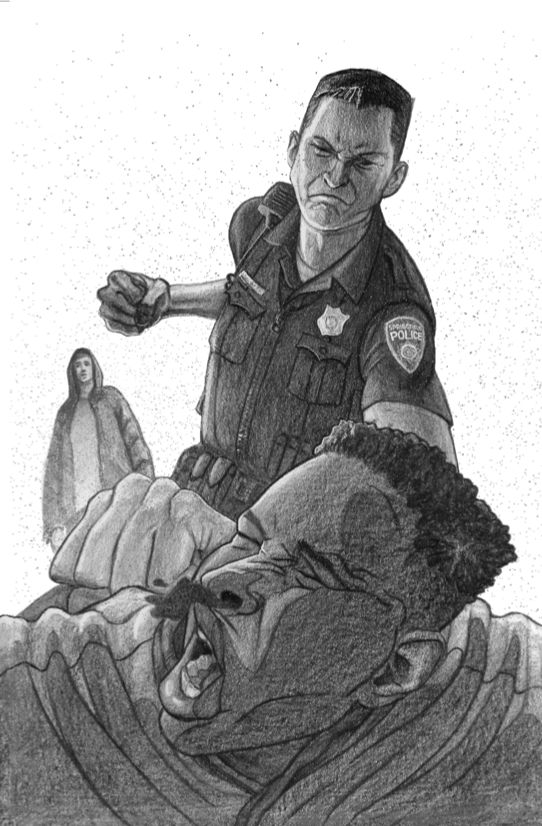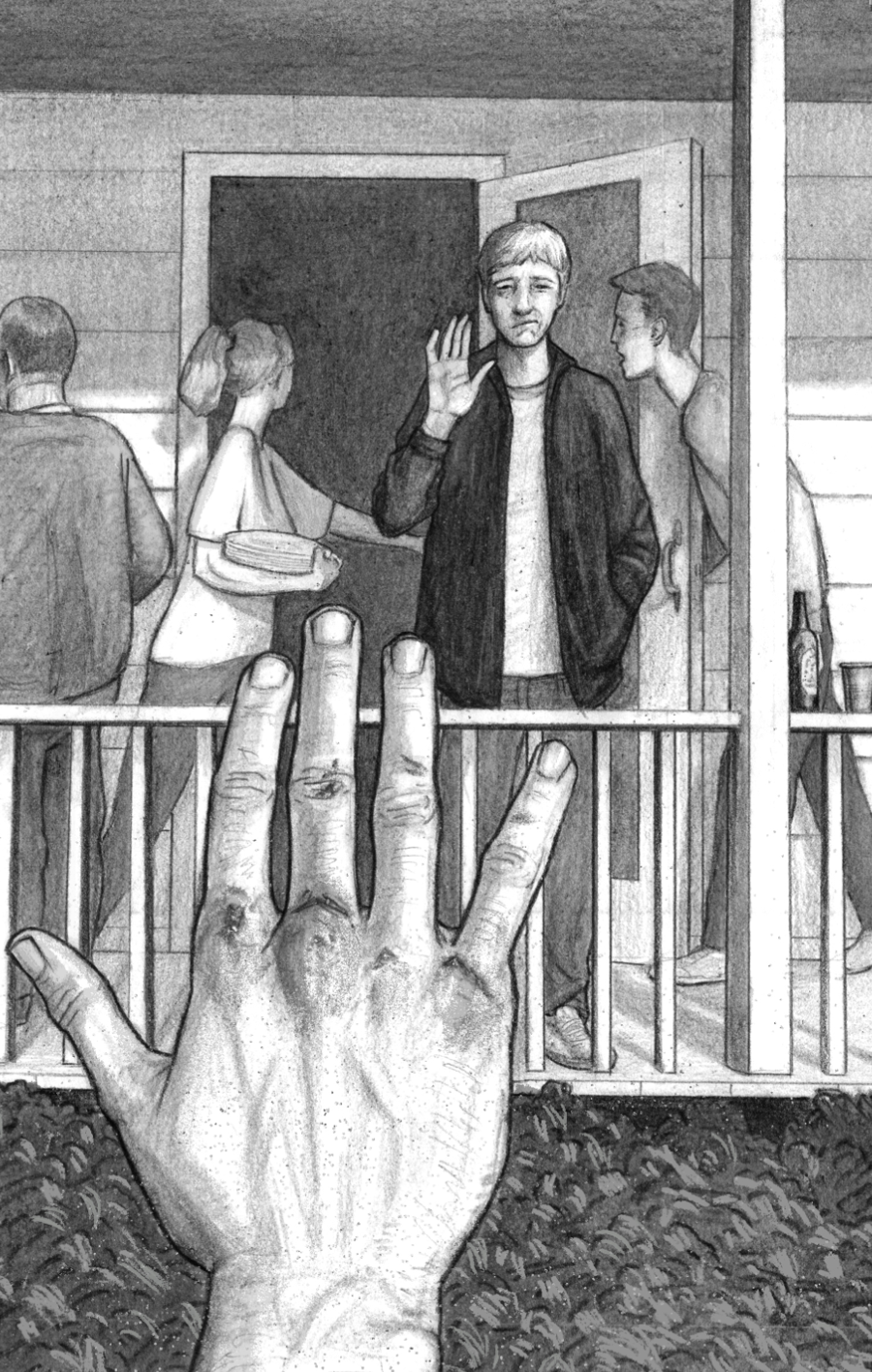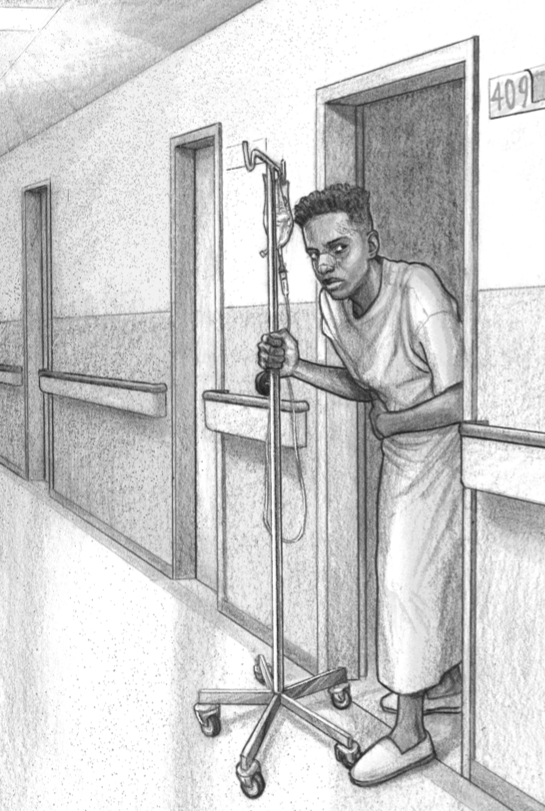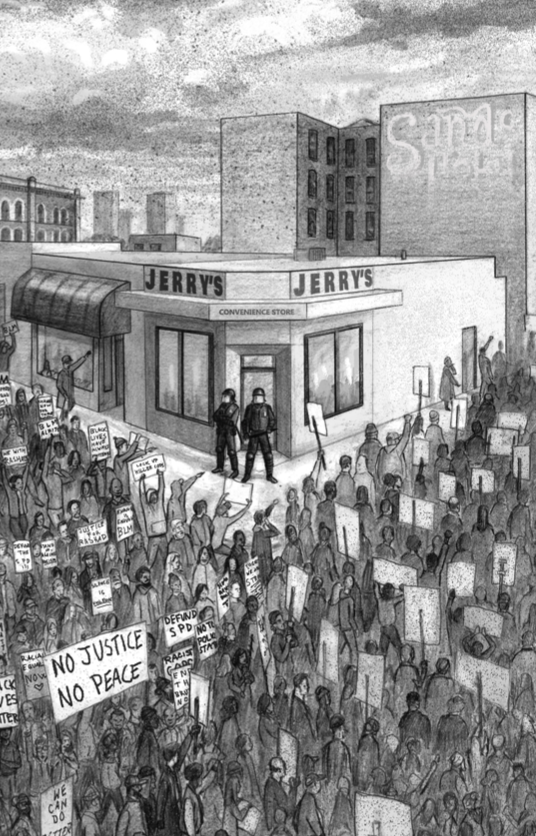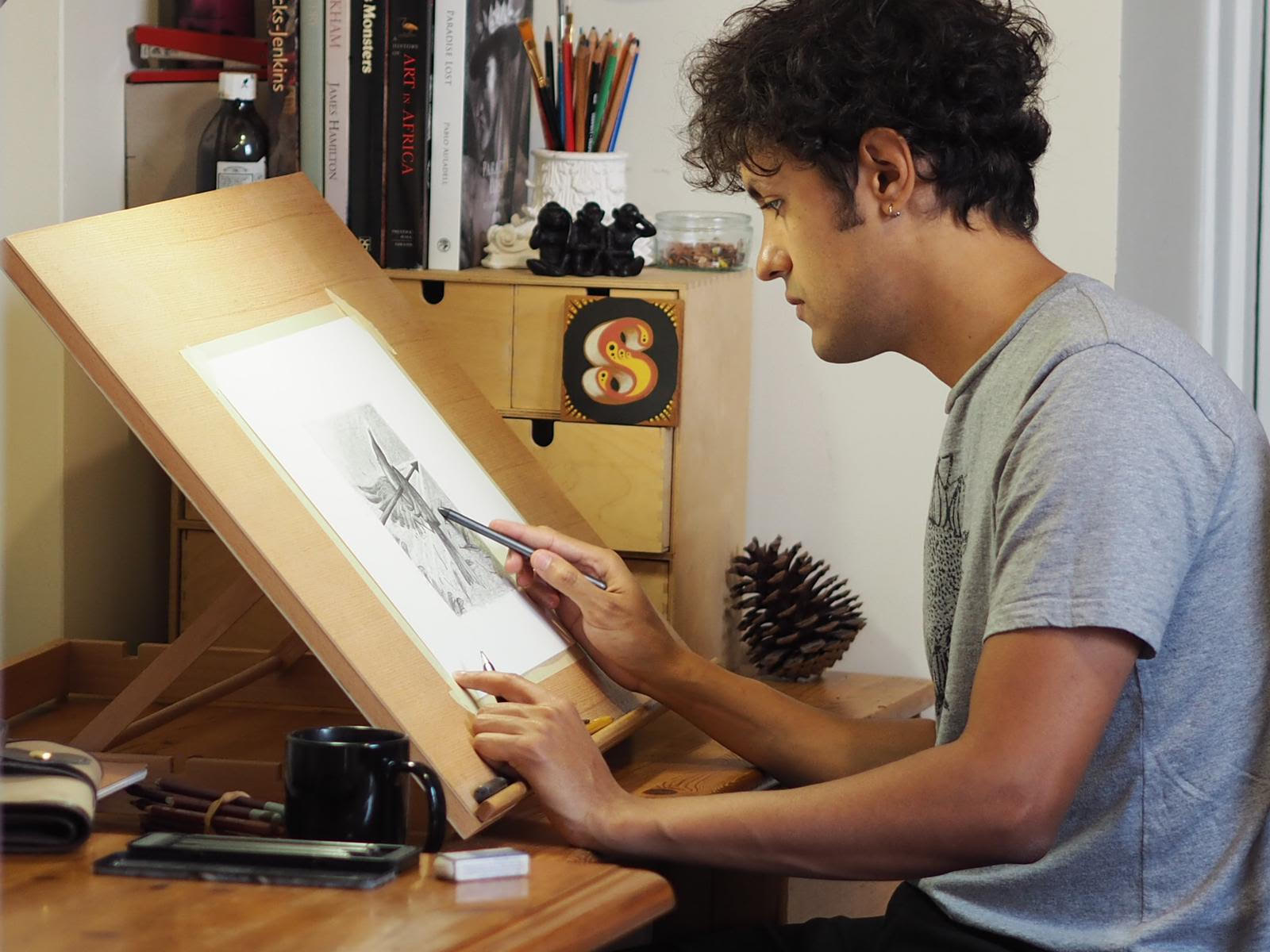Akhran Girmay is a UK-based illustrator who is enthralled by storytelling from ancient mythologies and enjoys the act of world-building. Often his stylistic objective is to produce textured and coarse illustrations through the use of traditional media and with a focus on dynamic and bold characterisations. Last year, Akhran was our second-place illustration winner for the 2020 FAB Prize. Next month, Faber will be releasing a newly illustrated edition of Jason Reynolds and Brendan Kiely’s YA Novel, All American Boys with striking artwork by Akhran.
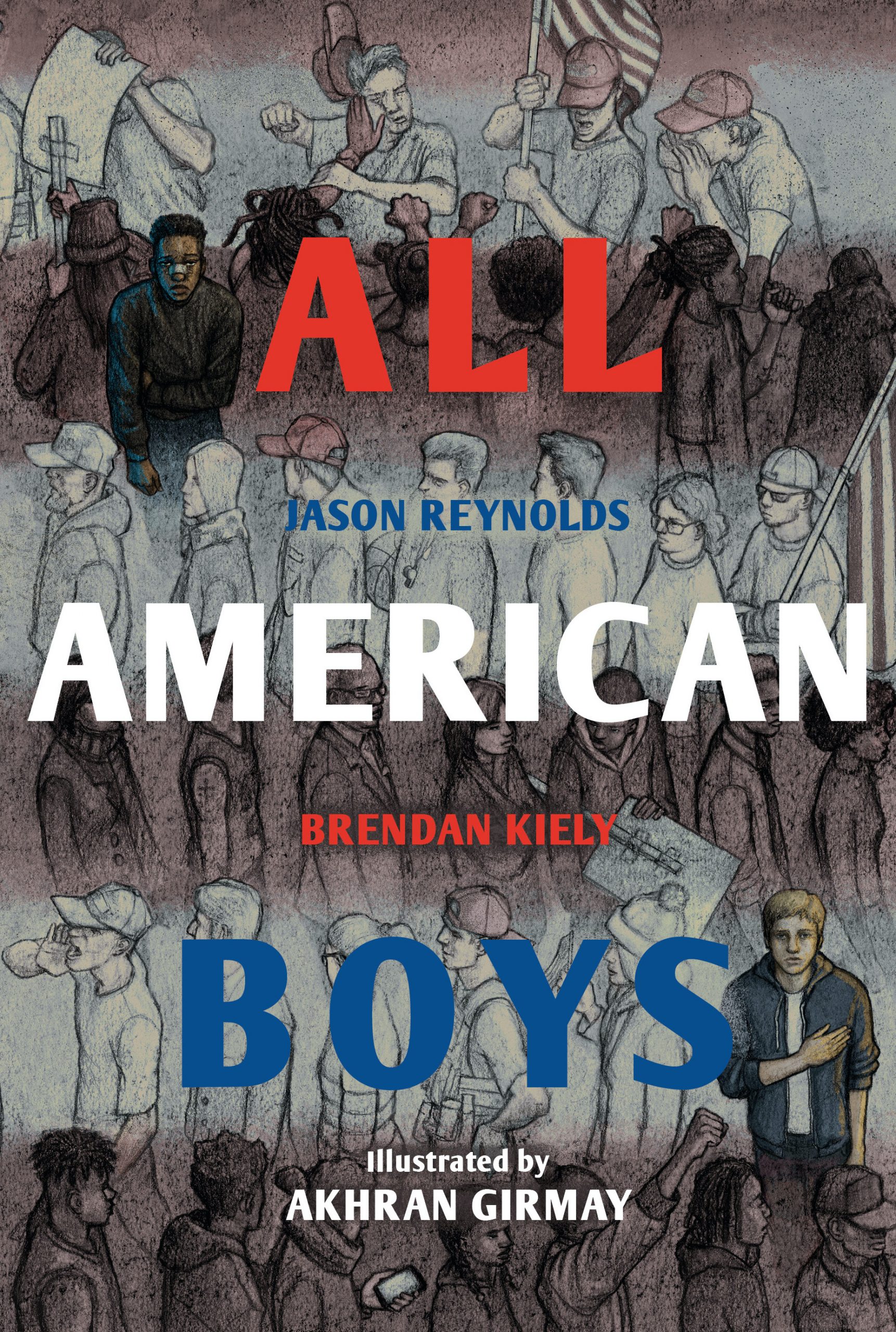
What has been your journey to this point? How did you get into illustration?
I’ve always loved drawing. It’s become my natural default when expressing my interests and how I see the world. In my childhood, I absorbed everything from what was on the TV and pictures in books, to the outside world. I would create the craziest and most unrestricted drawings from what I observed. Some of my early illustrations include drawings of animals and monsters sketched back in my primary school days when it was too wet to play outside. In secondary school, my drawing came to be known as a ‘bad habit’ by certain teachers who would find me doodling in the margins of notebooks or defacing my personal planner. At that point, it was undeniably a form of escapism. So, before I knew the word ‘illustration’, I was already deeply involved with and enjoying it for many years. When my hopes of launching an acting career were dashed after not being accepted into drama school, I chose to return to my love of art, which felt like I was reconnecting with an old friend. This led to my attending the illustration course at Falmouth University in Cornwall. After three great years there, I made the choice to devote myself to the dream of becoming a professional illustrator.
I saw your work for the first time last year. The poster you created for Lanre Malaolu’s The Circle is still embedded in my mind. I was so drawn to your faces and the expressions they conveyed. It felt so obvious to pair you with Jason’s writing. Can you tell us a little about your process? How did you approach this project? Have there been any surprises along the way?
I’m inspired by TV and more importantly by film. So the beginning of this project started with a sort of casting call, where I searched through shows, films and the internet for faces of people (famous actors, stock photos etc.) to get an idea of how the characters will look. In a way, it’s like I become a director and I can then explore and guide the emotions of the characters.
The only surprise I can recall was right at the beginning of working on this book with the very first image. Rashad is being attacked by Paul, the police officer, in this scene. As I was working on the final artwork for that illustration, I remember feeling a very visceral and almost anxiety-inducing experience in my body. The image was developing and fleshing out into something truly ugly and brutally frightening. This wasn’t too long after George Floyd’s murder, so it felt like it was further compounding the bleak and enraging atmosphere that the world was engulfed in at the time. I guess the surprise was that I didn’t expect to be so affected by my own work in that way.
That is so powerful. And we can definitely feel that energy in what you created. It conveyed so much in a way that words cannot. Where else do you find inspiration?
So I’ve covered my appreciation for cinema, but other areas of interest that feed into my work are history (ancient and modern), literature, people, culture, the natural world and mythology. I always feel like I’m missing something out when I mention these because what I like is so broad. I can also become obsessed with niche areas of larger subjects. I’m constantly going down rabbit holes of information and raking in things to fuel ideas for my current work or future passion projects. I suppose I can say that I take the greatest inspiration from stories of people involved in huge adventures and journeys, mostly of fantastical and epic proportions. I enjoy seeing through the lens of a character going somewhere far, to achieve or overcome something.
I often fall down rabbit holes too and find myself clawing my way out. Are there any artists you look up to?
Yes, loads, possibly too many. Here are a few: Lorenzo Mattotti, Clive Hick-Jenkins, Alan Lee, John Howe, Pablo Auladell, Moebius, Júlia Sardà, Frank Frazetta, Jean-Baptiste Oudry, Arthur Rackham, Shaun Tan, Charles White, Núria Tamarit, Thomas Blackshear, João Ruas, Francisco Goya, Chris Riddell, Edmund Dulac
I think have to stop there because it could honestly go on and on forever! I admire these artists for so many reasons. Most of them illustrate worlds, characters and narratives with such passion and focus that I can feel so deeply when I look at their works.
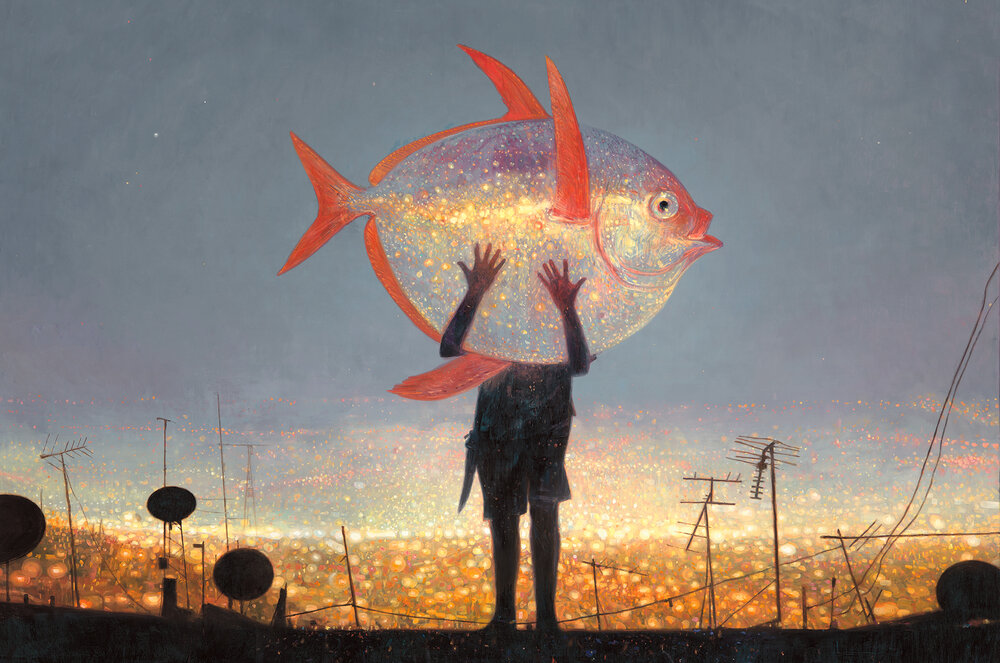
Shaun Tan – Moonfish 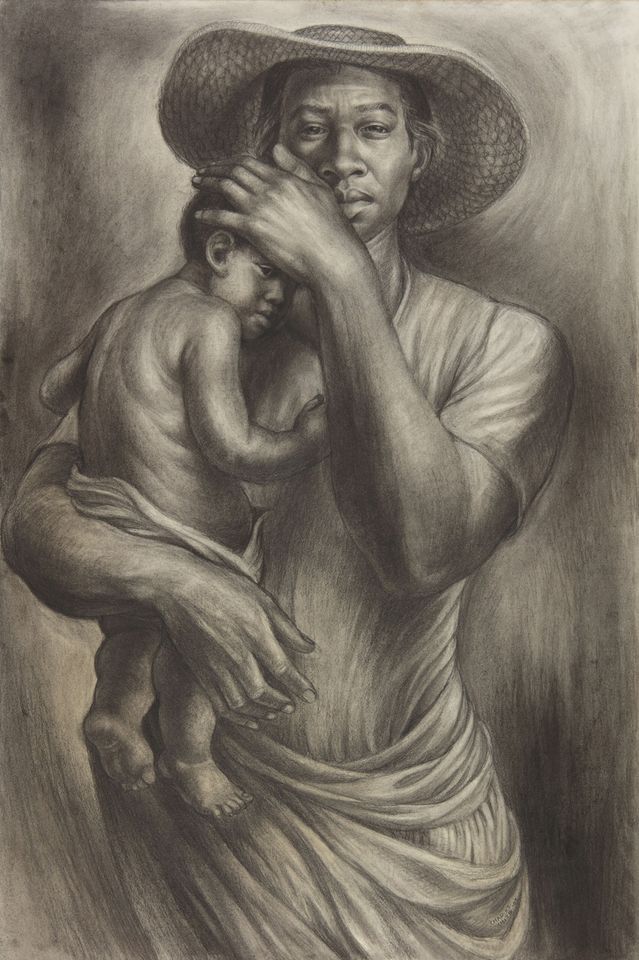
Charles White – Ye Shall Inherit the Earth 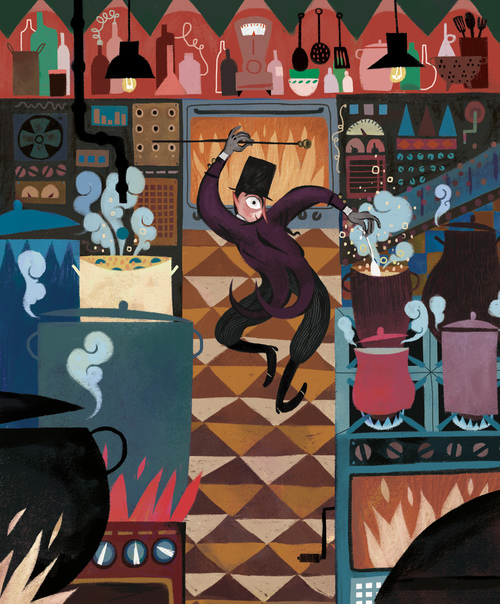
Júlia Sardà – The Inventing Room 
- Núria Tamarit – Greyhound
Are there any daily practices/regular habits which help you refine your skill?
This is a tricky question for me, because if I was to answer it honestly (and I will) you’ll get the idea that I am perhaps lazy or not determined. If I say that when I sit down to work, it is not always at the same time each day, will there be some illustrators or other creatives reading this who can relate? Time management is key people say, and to be honest I entirely agree. Yet I know that whenever I finally decide to go to the drawing board, it is a good time at that precise moment simply because I’m ready to dive in. Some days I’m a morning lark when it comes to tackling work, others I’m a night owl, scratching away into to early hours. It does create a chaotic, unorganised timetable, but I’m better at it than I once was and still improving. Music is nearly always my companion, as it aids the sense of drama and influences the emotion in my work.
I think that’s very honest and I’m sure so many artists can relate to your words. What has changed for you in the year since winning the FAB Prize?
Some really significant things in my life have changed because of FAB. I was saying to Faber Children’s Publisher, Leah Thaxton, that being included in the FAB Prize has been the highest blessing in so many ways. It has undeniably changed the dynamics of my life and it’s given me a sense of belonging within the world of illustration. I am working as a professional on really brilliant books with the support of wonderful people like Leah and Art Director, Emma Eldridge. I’m very thankful!
That’s so lovely to hear. I’m sure they appreciate your warm words. Is there any advice you would give to your younger self?
Keep things loose and relax. Stress a little less about stylisation and allow things to happen organically. I think we get corralled into a factory-like system from an early age, where we have to know and plan every stage of our lives. That constant training to prepare us for a ‘go, go, go’ world is not helpful for many creative minds. Sometimes you’ve got to stop and smell the roses. You need to pause. If you like something enough, do it at your own pace and then you’ll want to keep doing it. Then you might even get noticed for how much you’re enjoying it.
What advice would you give to new artists?
Now, this may sound like I’m contradicting what I just said in the previous answer, but I’m not. The sentiment that continuously comes back to me is ‘just keep going’. Tired and overused as that phrase is, it is also the single best advice to give your future career and dreams a surviving chance. You can and should take breaks from the things you love if that is what your body and mind are requesting from you. But if you have overarching ambitions and places you want to take your craft to, then you can’t allow yourself to get disheartened by fleeting moments of rejection or dismissal. Those who don’t see your work as you do are not on this journey. So the further you are willing to take it, the more likely you are to find people who will connect with you and your work. This could mean unashamedly sending your work out to agents or entering competitions like the FAB Prize. Or it could mean really realising that your passion project may require years of work before it’s ready to share with the world. Invest in yourself and be brave: it’s a brave thing to be an artist.
Wise words indeed. What book first made you feel seen and represented?
I don’t immediately recall this book as the first, but it has made me feel seen and, conveniently enough, it’s All American Boys by Jason Reynolds and Brendan Kiely. I’m not saying this to plug it any further, but it’s an incredible book for young adult readers. I would even argue that it is more than suitable for many adults, simply because of how it handles the all too reoccurring theme of racism. How it made me feel seen though has a lot to do with how honestly and acutely it details the emotional responses that the two young male protagonists have to a traumatic event. Every part of the first-person narrative allows you to feel what they feel. Being a person of both black and white ethnicity gave me an early insight into both of the perspectives that characters Rashad and Quinn offer. It’s not as simple as the black kid connects with my connection to my black heritage and vice versa, but more because these two boys are intertwined by an incident that feels unjust and huge on a socio-political spectrum, but that they were just ordinary boys before. The world that we inhabit together right now, and its political climate, is saturated with a lot of issues. For me, Reynolds and Kiely write about things that I want to vocalise, things that help me to feel seen.
Is there anything you’re excited about reading this year?
There are some that I am looking forward to and one that I’ve paused reading for nearly a year now. I know, it’s tragic, especially because it is brilliant! It’s called The Book of Trespass by Nick Hayes. Even though its focus is on British land laws, there is nothing boring or dull about it. It’s pulsing with radical notions of ownership, privilege and access to green spaces. From what I’ve read so far, I would highly recommend it! The other books are Neil Gaiman’s Norse Mythology, Bernard Cornwell’s The Winter King and Stephen Fry’s Heroes.
If you could choose any book in the world to illustrate, which would it be?
I’ve always been a huge fan of Tolkien, so to try my hand at visually interpreting his world would be an exciting challenge! That said, his works have had some of the best illustrators give illustrative life to them with abundance. So second to illustrating either The Hobbit or The Lord of the Rings, I’d happily go for a retelling of a classic Greek Myth like Theseus and the Minotaur!
About All American Boys:
The New York Times bestselling novel about police brutality in the US – now fully illustrated by Akhran Girmay.
I just wanted him to stop beating me. I just wanted to live.
After a violent act that leaves their community and, ultimately, the country divided, Rashad and Quinn – one Black, one White – face the truth that racism and prejudice are all around us. And there’s a future at stake, a future where no one will have to deal with police brutality. They just have to risk everything they’ve ever known to speak out.
This edition includes evocative black and white illustrations from Akhran Girmay.




